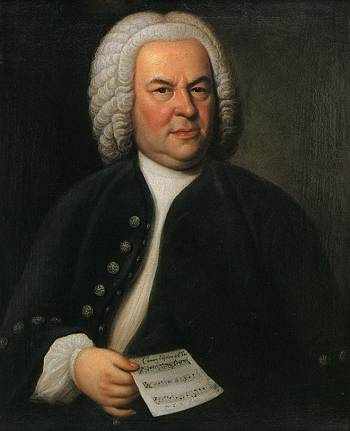
Another characterizing feature of transcendence is comprehensiveness. The transcendent person leaves no stone unturned.
Real
True Narratives
(Leonardo) filled the opening pages of one of his notebooks with 169 attempts to square a circle. In eight pages of his Codes Leicester, he recorded 730 findings about the flow of water; in another notebook, he listed sixty-seven words that describe different types of moving water. He measured every segment of the human body, calculated their proportional relationships, and then did the same for a horse. He drilled down for the pure joy of geeking out. [Walter Isaacson, Leonardo da Vinci, (Simon & Schuster, 2017), p. 521.]
Our narrative includes impressive bodies of work, which took years or decades to create. It also includes stories of people who invested the time and effort to appreciate them fully.
- Christopher Beha, The Whole Five Feet: What the Great Books Taught Me About Life, Death, and Pretty Much Everything Else (Grove Press, 2009), on reading all 51 volumes of the Harvard classics, intensively, after encountering personal tragedies.
- Phyllis Rose, The Year of Reading Proust: A Memoir in Real Time (Scribner, 1997), a self- examination wrapped around a study of great literature.
- David Denby, Great Books: My Adventures With Homer, Rousseau, Woolf and Other Indestructible Writers of the Western World (Simon & Schuster, 1996), on making up for lost time with the classics.
- Rebecca Mead, My Life in Middlemarch (Crown Publishers, 2014), “a beguilingly straightforward, resolutely orthodox and unshowy account of the writer’s lifelong admiration for George Eliot and for ‘Middlemarch.’”
- Rick Gekoski, Outside of a Dog: A Bibliomemoir (Peribo, 2009), tracing the influence of 25 books on the author’s life.
- Along the same lines from the gray side (or maybe chartreuse) are Nicholson Baker, U and I (Random House, 1991); and Geoff Dyer, Out of Sheer Rage: Wrestling With D. H. Lawrence (North Point Press/Farrar, Straus & Giroux, 1998), “very amusing.”
- Uwe Johnson, Anniversaries: From a Year in the Life of Gessine Cresspahl (1970-1983): “This book aims to be comprehensive on every topic it takes up — among them, village life in postwar Germany, housing segregation on the Upper West Side of Manhattan, media coverage of Vietnam and the lead up to the Prague Spring. I read to the point of word-intoxication, passed out on the page, woke up, kept going.”
- Sarah Ogilvie, The Dictionary People: The Unsung Heroes Who Created the Oxford English Dictionary (Knopf, 2023): “Unlike its predecessors, the new dictionary should be descriptive rather than prescriptive, including all the words of the language, current and archaic, highblown and vulgar. Moreover, it should trace their shifting meanings over the centuries, and always — crucially — support its assertions with the evidence of published quotations.”
- Jason Roberts, Every Living Thing: The Great and Deadly Race to Know All Life (Random House, 2024) “tells the story of the scholars who tried to taxonomize the world.”
Technical and Analytical Readings
Encyclopedia of Life is a site created to chronicle every living species.
Photographs
Documentary and Educational Films
Imaginary
Fictional Narratives
Poetry
Music: Composers, artists, and major works
Several musical artists have recorded a composer’s complete works, of a kind. Many artists have performed/conducted complete symphonies, string quartets, piano sonatas, concerti and other works by great and lesser composers. This listing will be limited to a few massive artistic outputs. Some of the great intensive traversals of the musical arts are:
- Dietrich Fischer-Dieskau, singing Franz Schubert’s complete lieder;
- Christian Gerhaler, singing Robert Schumann’s complete lieder;
- Ádám Fischer and Austro-Haydn Hungarian Orchestra, performing Franz Joseph Haydn’s complete symphonies;
- Christopher Hogwood and Academy of Ancient Music, performing Wolfgang Amadeus Mozart’s complete symphonies;
- Jeffrey Tate and English Chamber Orchestra, performing Wolfgang Amadeus Mozart’s complete symphonies;
- Ingrid Haebler, performing Wolfgang Amadeus Mozart’s complete piano concerti;
- Kodàly Quartet, performing Franz Joseph Haydn’s complete string quartets;
- Rene Gianoli, performing Robert Schumann’s complete piano works (part 1; part 2);
- Scott Ross, performing Domenico Scarlatti’s complete keyboard sonatas.
Works in which the composer aimed at completeness:
- Georg Philipp Telemann’s Essercizii Musici (Musical Exercises) (ca. 1740) (approx. 201-236’) represent his attempt to write a series of compositions for every combination of instruments. Of course, he only included a few instruments in his musical universe but this attempt illustrates the idea just the same; and the music is excellent.
- Telemann made a similar attempt at comprehensiveness with Der Getreue Music-Meister (The Constant Music Master) (1728-1729), a series of seventy works, published serially in an attempt to educate the public musically.
- Kaikhosru Shapurji Sorabji, Sequentia Cyclica: Super Dies Irae ex Missa Pro Defunctis (1948-1949) is a seven-to-eight-hour composition for piano based on a single theme from Gregorian chant.
- Almeida Prado, Cartas Celestas (1974-2010) explores “every kind of resonance and sound the piano has to offer . . .” Pianist Aleyson Scopel describes it as “'a heroically audacious cycle' that depicts the sky and constellations in 'colours, light, darkness and an almost mythological understanding and approach to the universe'”. Scopel has recorded Volume 1 (73’), Volume 2 (76’), Volume 3 (62’) and Volume 4 (62’).
Music: songs and other short pieces
Visual Arts
- Jackson Pollock, Mural (1943)
- Michanengelo Buonarotti, Sistine Chapel